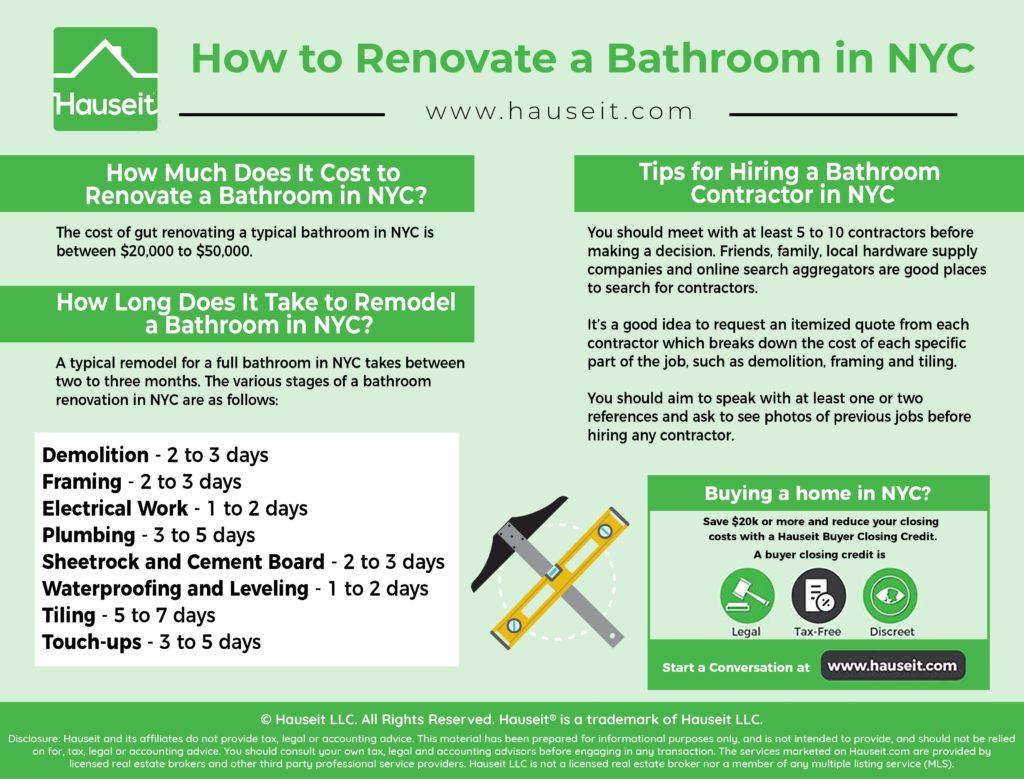The easiest way to find a bathroom contractor in NYC is to reach out to your immediate network of friends and family. The most important thing to do when hiring a contractor is to check references, so asking people you know is the most natural way to find a trustworthy contractor.
If you don’t know anyone who has done a bathroom renovation, another good place to look for names is at your local hardware supply store. These are the places where contractors go to pick-up supplies for jobs. As a result, the people working here can often provide recommendations.
Another way to find a bathroom contractor is to use an aggregator site like HomeAdvisor or a review-based platform such as Yelp or Google.
As a general rule of thumb, you should meet with at least 5 to 10 contractors before making a decision. Take copious notes on each meeting, and try to ask each successive contractor about the various things which previous contractors may have told you. It’s very common for contractors to have different opinions on virtually everything.
It’s a good idea to request an itemized quote from each contractor which breaks down the cost of each specific part of the job: demolition and trash removal, framing, tiling, etc.
Once you receive a bunch of itemized quotes, you should compare each specific line item. Once you’ve narrowed down your list of candidates, the next step is to ask for references and photos of previous jobs.
It’s truly shocking how many successful home owners in NYC don’t bother to call any contractor references before agreeing to a $30,000 job! No matter how impressed you were by a contractor’s sales pitch, you must absolutely speak with references before hiring that contractor.
Once you have one or two candidates left, you can consider negotiating down the price for specific parts of the quote. It’s also prudent to review the language of the job description in the contract and request additional detail in writing if anything is vague.
You should also discuss payment terms, as most contractors will assume you’re paying cash. Telling then you’ll pay with a card or check early on when you hire them and then offering them cash once it’s time to pay can save you up to an extra 10%.








This is a very helpful overview. Question: how much more expensive it would be to install a double sink vanity?